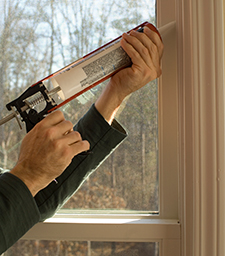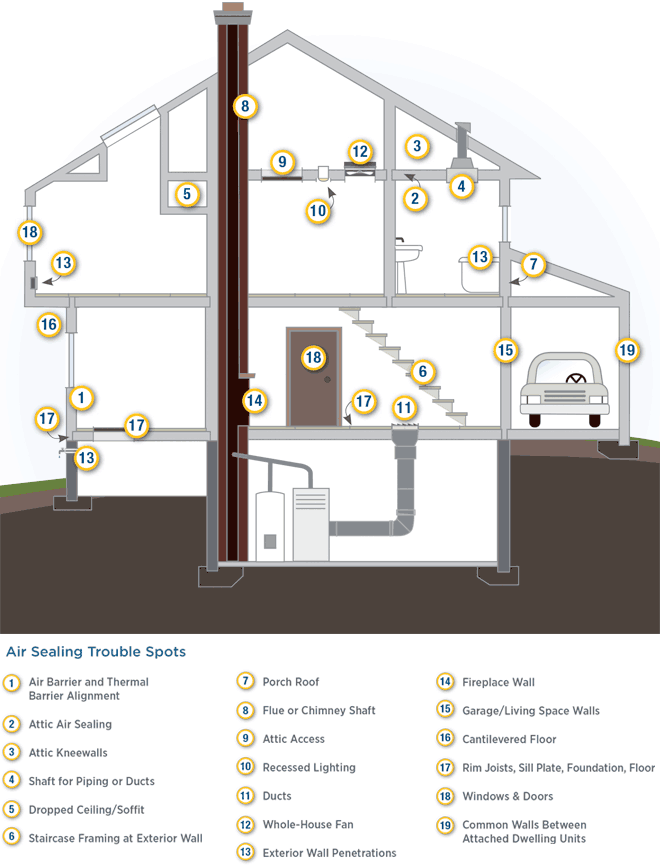Air Sealing
Click here to learn more about air weatherization rebates.
Reducing the amount of air that leaks in and out of your home can be a cost-effective way to reduce heating costs and improve comfort. Some air sealing measures like caulking and weather stripping can be installed as do-it-yourself projects, but many air sealing projects are best completed by a professional. A professional energy audit can help to prioritize air sealing efforts. Click here to find a contractor near you.
 Air sealing reduces drafts and heat loss by eliminating air leaks in the building around the chimney, plumbing penetrations, and recessed lights. Residential Registered Vendors use a variety of materials, including caulk, spray foam, metal flashing, weather stripping, and rigid foam. Some materials are more suitable than others for specific locations or trouble spots. For example, fire-rated caulk and metal flashing are used in high-temperature air sealing situations like around the chimney.
Air sealing reduces drafts and heat loss by eliminating air leaks in the building around the chimney, plumbing penetrations, and recessed lights. Residential Registered Vendors use a variety of materials, including caulk, spray foam, metal flashing, weather stripping, and rigid foam. Some materials are more suitable than others for specific locations or trouble spots. For example, fire-rated caulk and metal flashing are used in high-temperature air sealing situations like around the chimney.
Air leaks can be difficult to visualize, but symptoms include musty smells traveling from the basement, drafty rooms, and ice dams. Spider webs are often indicators of where there is airflow in basements and crawl spaces.
The Department of Energy graphic below has a useful cross-section diagram illustrating the most common air leakage spots.

The best way to learn where your home might benefit from air sealing is to consult with a Residential Registered Vendor. They’ll use diagnostic equipment, such as a blower door to assess the relative “leakiness” of your home. They may also use a smoke pencil to locate the leaks and/or a thermal camera to assess insulation levels. Based on their findings, they’ll recommend ways to improve comfort and save money.
Benefits
- Comfort – Air sealing reduces drafts, which can make rooms warmer in the winter and cooler in the summer.
- Quick Payback – Many homeowners realize enough savings on heating and cooling costs that they recoup their investment within three years.
Considerations
- Trapped Moisture – While air sealing can minimize outside air coming into your home, it can also trap moisture indoors. Moisture problems should be addressed before, or as part of, an air-sealing project.
- Inadequate Ventilation – In extreme cases, air sealing can make homes too tight, requiring a ventilation system and/or make-up air for heating systems. Air sealing should be done in conjunction with blower door testing.
